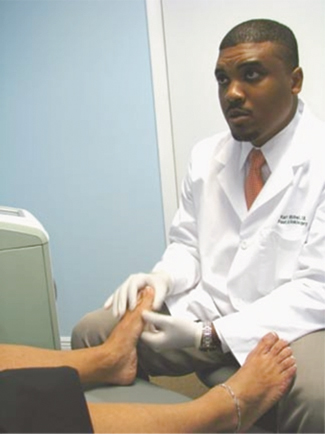By Dr. Karl Michel –
 Arthritis is an inflammation and swelling of the cartilage and lining of one or more joints. A joint is the area where two bones meet. As the lining of the joint erodes it causes the breakdown of the cartilage which normally protects a joint, allowing it to move smoothly. The cartilage also absorbs shock when pressure is placed on the joint, such as when you walk. Therefore, without the normal amount of cartilage, the bones rub together, causing pain, swelling (inflammation), and stiffness.
Arthritis is an inflammation and swelling of the cartilage and lining of one or more joints. A joint is the area where two bones meet. As the lining of the joint erodes it causes the breakdown of the cartilage which normally protects a joint, allowing it to move smoothly. The cartilage also absorbs shock when pressure is placed on the joint, such as when you walk. Therefore, without the normal amount of cartilage, the bones rub together, causing pain, swelling (inflammation), and stiffness.
Some Types of Arthritis
Often time arthritis is a component of complex diseases that may involve more than 100 identifiable disorders meaning that there are over 100 different types.
The more common types are: Osteoarthritis (most common), Ankylosing spondylitis, Gonococcal arthritis, Gout, Juvenile rheumatoid arthritis (in children), other bacterial infections (nongonococcal bacterial arthritis), Psoriatic arthritis, Reactive arthritis (Reiter syndrome), Rheumatoid arthritis (in adults), Scleroderma, Systemic lupus erythematosus (SLE).
Some types of arthritis may cause joint deformity. This may be a sign of severe, untreated rheumatoid arthritis which is characterized by lengthy morning stiffness, fatigue and weight loss. Women are 3-4 times more likely than men to suffer.
A serious inflammatory form of arthritis is psoriatic arthritis which will develop in up to 30 percent of people who have the chronic skin condition. Psoriatic arthritis can affect not only your skin but the joints of your hands and feet.
In August 2010, the pro golfer Phil Mickelson revealed his battle and struggle with Psoriatic arthritis that came suddenly and left him temporarily in a near crippled state. Fortunately, the quick diagnosis by his doctor, and effective treatment helped him get back in the game.
Signs, Symptoms and Tests:
You should visit your podiatric physician if you have one or more of the following:
• Swelling in one or more joints
• Recurring pain or tenderness in any joint
• Redness or heat in a joint
• Limitation of motion in joint
• Early morning stiffness
• Skin changes, including rashes and growths
Blood tests and joint x-rays are often done to check for infection and other causes of arthritis. Your doctor may also remove a sample of joint fluid with a needle and send it to a lab for examination.
General Treatments
While there is no cure, the management of inflammation is the key. The goal of treatment is to reduce pain, improve function, and prevent further joint damage.
Lifestyle changes are the preferred treatment for osteoarthritis and other types of joint inflammation. Exercise can help relieve stiffness, reduce pain and fatigue, and improve muscle and bone strength. Your health care team can help you design an exercise program that is best for you. Physical therapy may be recommended.
Control of foot function with orthotics or braces to support the joints and help improve their position; this is often needed for osteoarthritis and rheumatoid arthritis.
It is also important to eat a healthy diet full of fruits and vegetables, which contain important vitamins and minerals, especially vitamin E, foods rich in omega-3 fatty acids, such as cold water fish (salmon, mackerel, and herring), flaxseed, rapeseed (canola) oil, soybeans, soybean oil, pumpkin seeds, and walnuts.
Recently, scientists of the University of the East Anglia in the UK are in good traces of a new discovery: The effect of broccoli on treating osteoarthritis. It all consists in a compound found in broccoli named sulforaphane which blocks the enzymes that cause osteoarthritis.
Surgical Treatment
In some cases, surgery may be done if other treatments have not worked.
• Arthroplasty to rebuild the joint
• Joint replacement
• Joint fusion
Some Important Facts:
• Arthritis in one form or another afflicts 66 million Americans or nearly 1 in 3 adults.
• 42.7 million Americans have doctor-diagnosed arthritis and 23.2 million others live with chronic joint symptoms but have not been diagnosed by a doctor.
• Arthritis is one of the most prevalent chronic health problems and the nation’s leading cause of disability among Americans over age 35.
• Arthritis is second only to heart disease as a cause of work disability.
• Arthritis limits everyday activities such as walking, dressing and bathing for more than 7 million Americans.
• Arthritis results in 39 million physician visits and more than a half million hospitalizations.
• Costs to the U.S. economy total more than $86.2 billion annually.
• Arthritis affects people in all age groups including nearly 300,000 children.
• Baby boomers are now at prime risk. More than half those affected are under age 65.
Prevention
Arthritis is manageable, early diagnosis is important since destruction of cartilage is not reversible and because the foot is where arthritis often manifests, Dr. Michel and Dr. Pero are often the first physicians to encounter some of the typical complaints because there is often pain associated with standing, walking and running. Furthermore, they are both medically and surgically trained in the management of arthritis of the foot and ankle and have been diagnosing and treating all types of arthritis in West Palm Beach for many years. They are on staff at several hospitals and surgical centers in the Palm Beach County area and offer a wide range of both conservative and surgical treatment options in order to improve and maintain a healthy lifestyle for patients of all ages. The key is to seek care and follow up periodically to manage your care with your doctors.
INTEGRATIVE FOOT & ANKLE CENTER
Dr. Daniel Pero & Dr. Karl Michel
(561) 293-3439 | www.integrativefoot.com
Check Also
RejuvaNATION MedSpa: Elevating Men’s Health to New Heights
Embark on a Journey to Revitalize Your Vitality Rediscover the joy of a spontaneous sex …
 South Florida Health and Wellness Magazine Health and Wellness Articles
South Florida Health and Wellness Magazine Health and Wellness Articles




